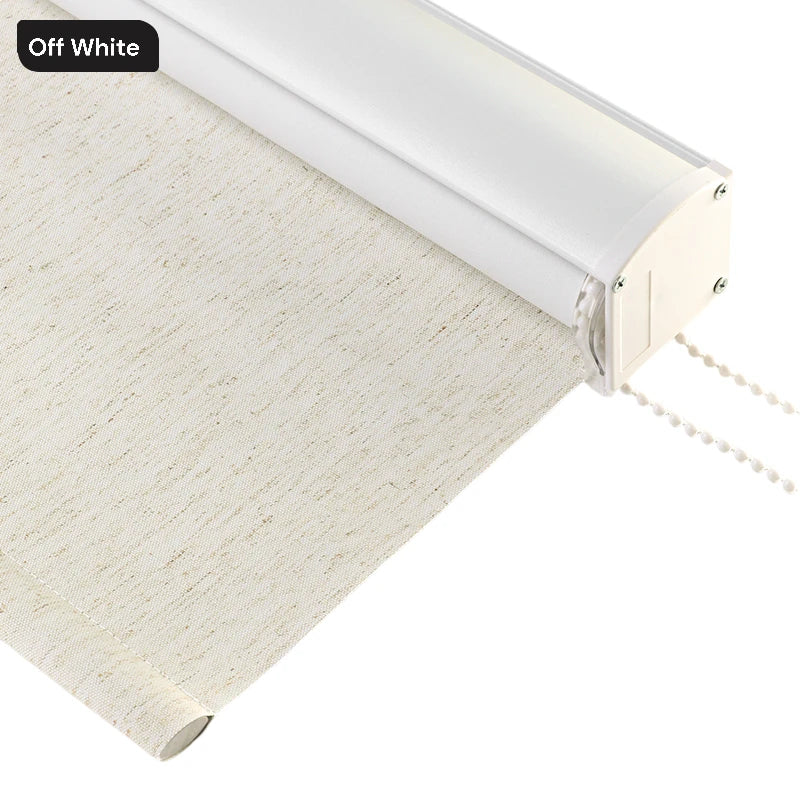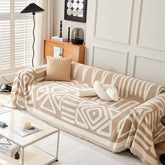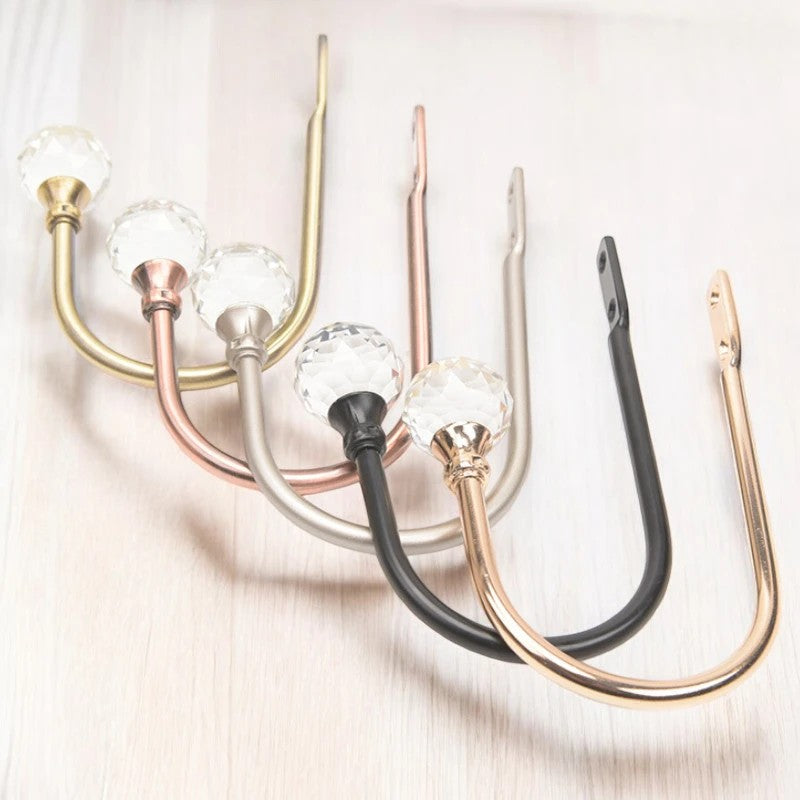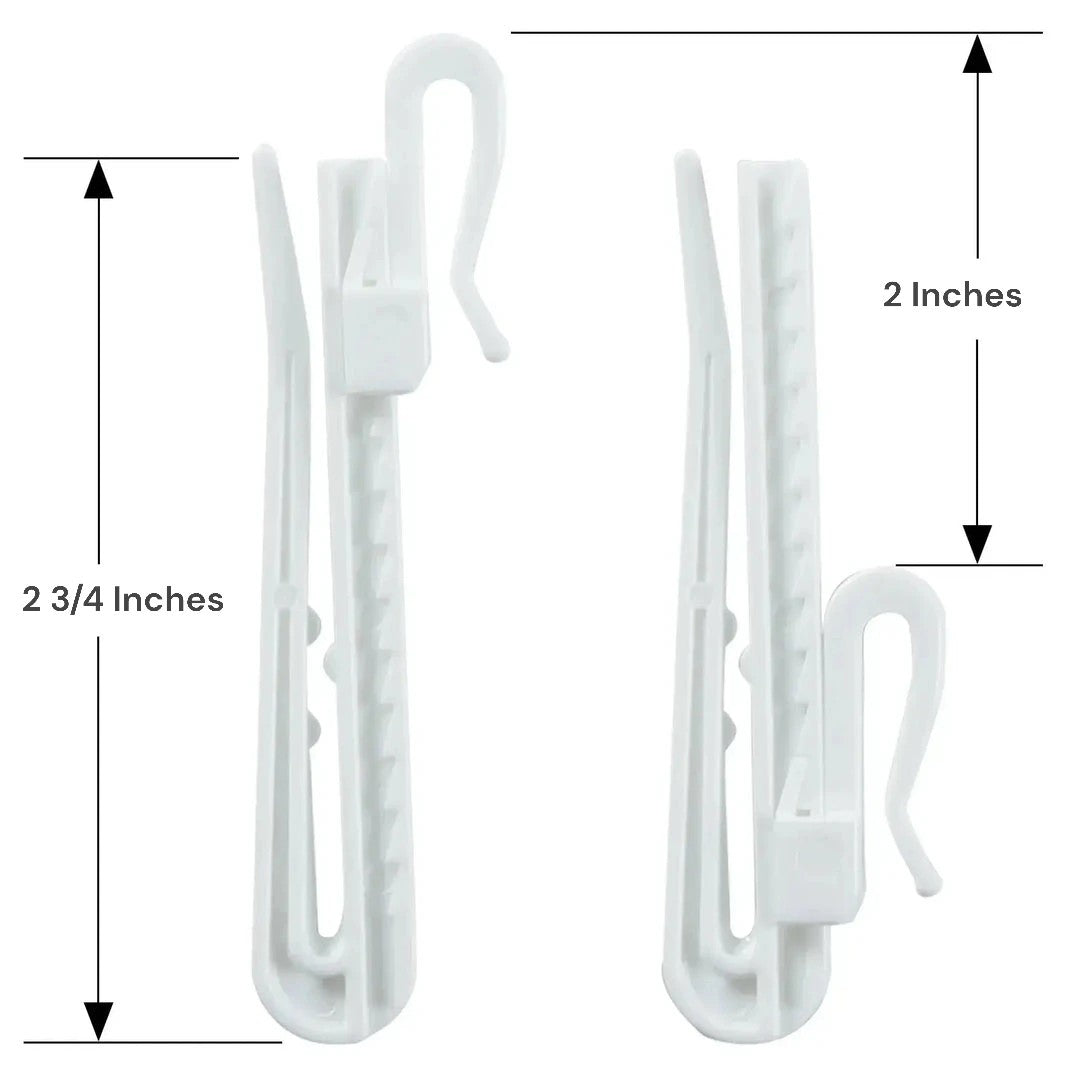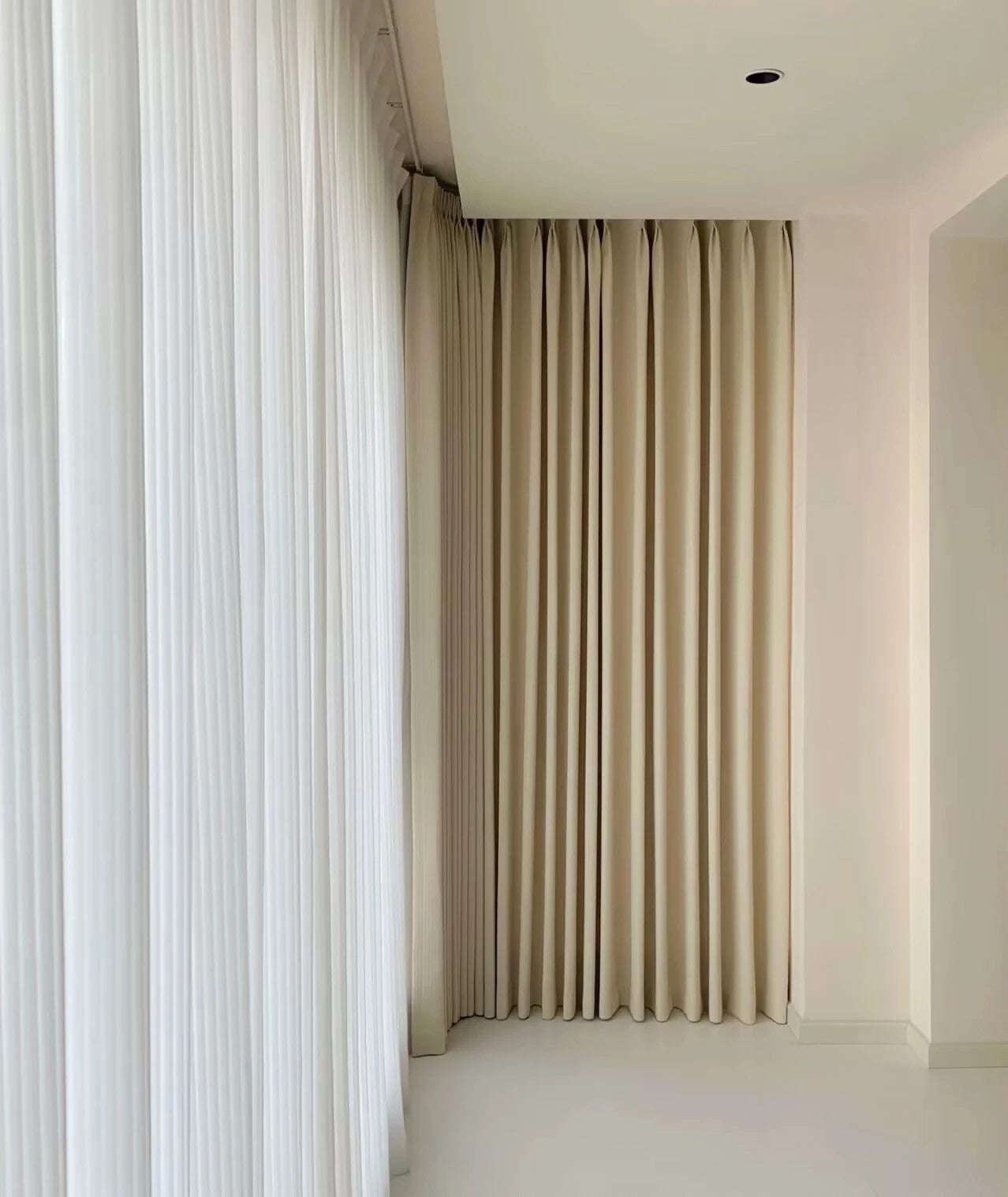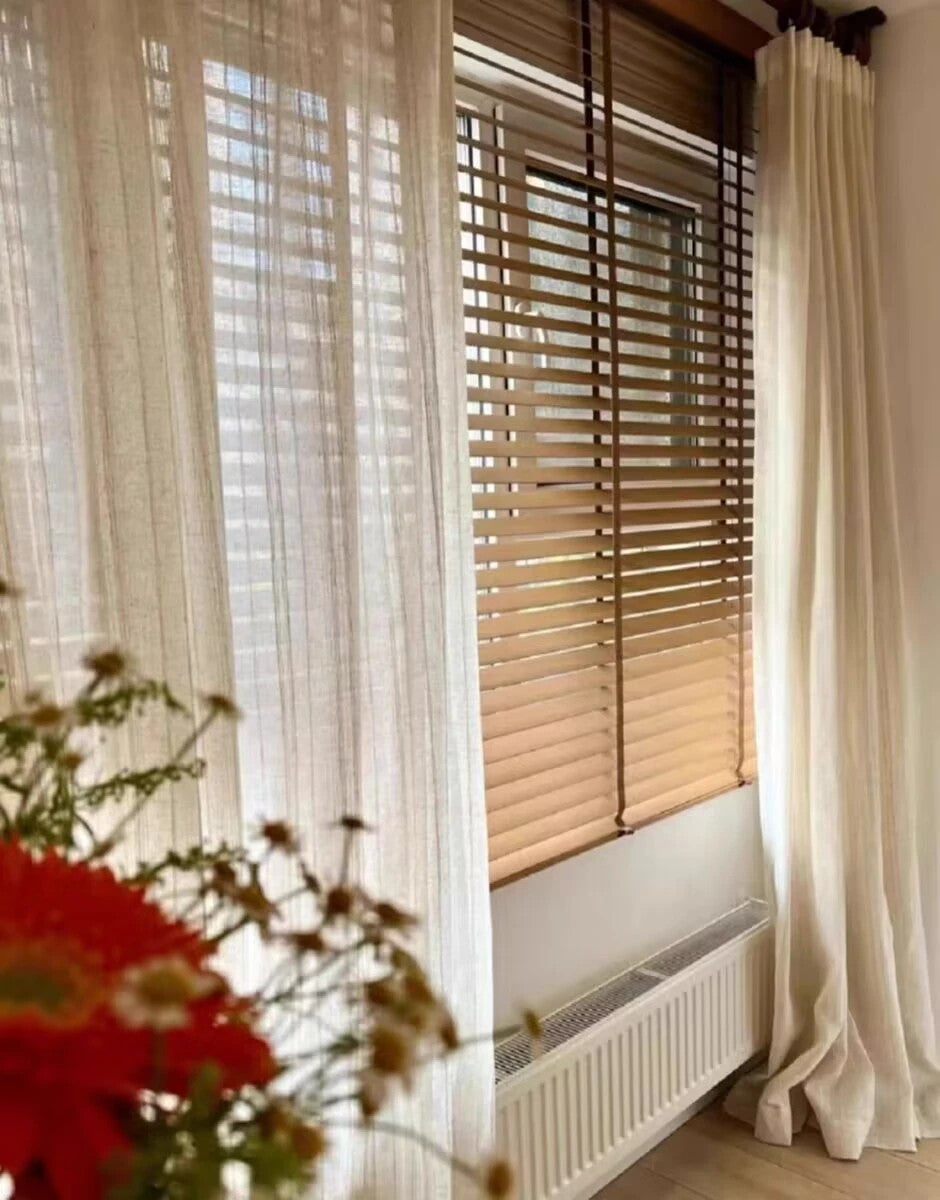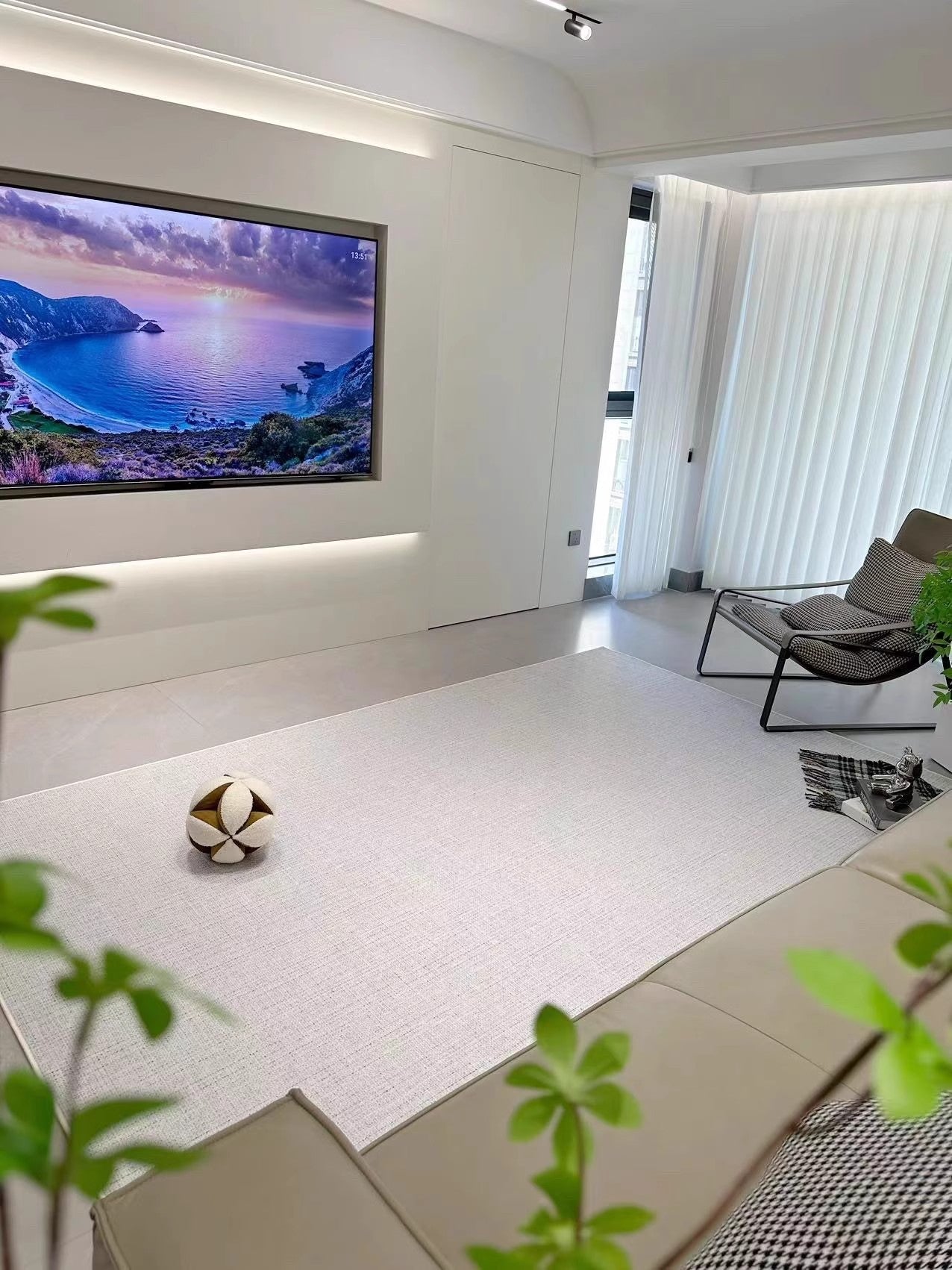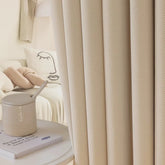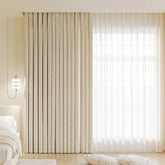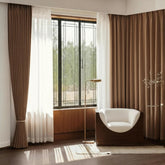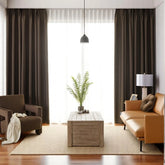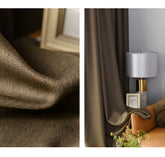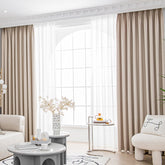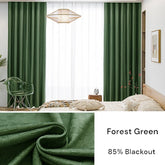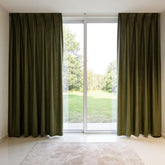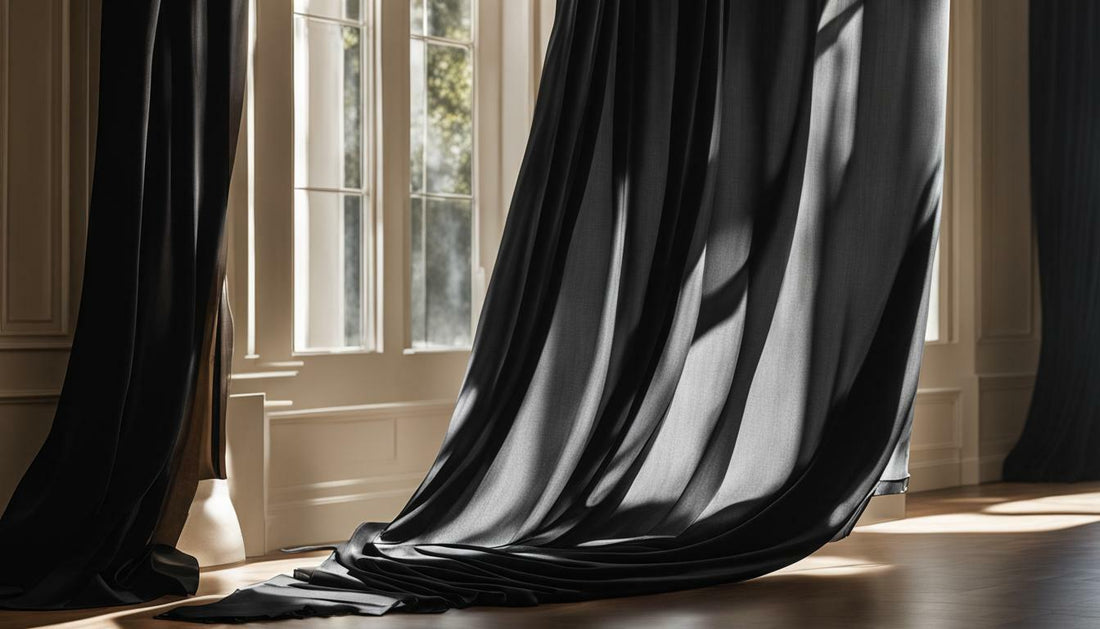Best Fabric for Blackout Curtains: Your Ultimate Guide
Blackout curtains are a popular choice for homeowners who want to block out sunlight, reduce outside noise, and improve the privacy of their living spaces. However, choosing the right fabric for blackout curtains is essential in achieving their full potential.
When selecting blackout curtain fabric types, density, thickness, and color are key factors to consider. Tightly woven fabrics, such as velvet or heavy-weight polyester, offer excellent light-blocking capabilities. Thicker fabrics like suede or thermal-backed materials provide enhanced light-blocking capabilities by creating a barrier that absorbs and reflects light. Darker colors like black or navy are more effective in absorbing light, while lighter colors allow some light to filter through, reducing the blackout effect.
In this ultimate guide, we will explore the different fabric options available and their benefits in creating a dark and peaceful environment for your home. Read on to find out more.
Key Takeaways
- Choosing the right fabric for blackout curtains is essential for maximum light-blocking capabilities.
- Factors to consider when selecting fabric include density, thickness, and color.
- Tightly woven fabrics, thicker fabrics, and darker colors offer better light-blocking capabilities.
- Popular fabric options for blackout curtains include blackout lining, polyester blackout fabric, and thermal-backed fabrics.
Polyester - Durable and Efficient
One of the most common fabrics used for blackout curtains is polyester. This textile material is known for its durability and efficiency, making it an excellent choice for home decor. Polyester fabrics have a high strength-to-weight ratio, which means that they are strong and long-lasting. They are also resistant to stretching, shrinking, and wrinkles, making them easy to care for and maintain.
Polyester fabrics are highly efficient in terms of their production process. They are a synthetic fiber made from petrochemicals derived from petroleum or natural gas. The production of polyester requires less energy and water compared to natural fibers like cotton. It also has a low environmental impact as it can be recycled and reused multiple times.
One of the key benefits of using polyester for blackout curtains is its resistance to fading. Polyester fabrics have the ability to retain color and resist fading, making them a popular choice for home decor items that require long-lasting vibrant colors. They are also resistant to UV rays, making them ideal for products that are exposed to sunlight.
Another advantage of polyester fabrics is their moisture-wicking properties. This makes them an ideal choice for activewear and sports apparel. Polyester has the ability to draw sweat away from the skin, keeping the wearer dry and comfortable during physical activities. Polyester is also resistant to mildew, making it suitable for outdoor applications or humid environments.
In conclusion, polyester is a durable and efficient textile material that is widely used in various industries. Its strength, resistance to wrinkles and stretching, and moisture-wicking properties make it a preferred choice for blackout curtains, activewear, and sports apparel. Moreover, its low environmental impact and recyclability contribute to its efficiency and sustainability. Whether it's for clothing, upholstery, or other applications, polyester continues to prove its worth as a reliable and efficient textile material.

Velvet - Luxurious and Effective
Another popular premium fabric for blackout curtains is velvet. This fabric is well-known for its luxurious feel and elegant appearance. It's a versatile material that can be used for various decor styles, from modern to traditional, depending on the color and finish of the velvet.
Velvet is also an effective fabric for blockout curtains. The dense pile of the fabric helps to block out light, making them an ideal choice for bedrooms or media rooms. The fabric also offers excellent insulation, trapping air between the fibers to help maintain the desired temperature in the room.
One of the key benefits of velvet is its softness. The dense pile of the fabric makes it incredibly plush to the touch, providing a sense of comfort and luxury. Additionally, the unique reflective properties of velvet give it a subtle shimmer, adding to its opulent appearance.
Another advantage of velvet is its durability. This fabric is strong and resistant to wear and tear, making it a practical choice for curtains and upholstery. The natural ability of velvet to maintain its shape also prevents sagging or wrinkling over time, ensuring that your curtains will retain their appearance as well as their functionality.
Velvet is available in a wide range of colors, from deep jewel tones to light pastels, allowing you to select the perfect shade to complement your decor. When choosing velvet for your blackout curtains, opt for a darker color to ensure maximum light blocking.
Overall, velvet is a luxurious and effective fabric for blackout curtains. Its softness, insulating properties, and durability make it an excellent choice for creating a cozy and elegant atmosphere in any room. Adding velvet curtains to your decor is sure to elevate the ambiance and create a sophisticated look.
Microfiber and Nylon - Affordable Alternatives
If you're looking for a more affordable option, consider blackout curtains made from microfiber or nylon. These fabrics offer excellent light-blocking qualities, but there are a few other alternatives that are worth considering if you're on a budget.
Polyester is a synthetic fabric that offers similar qualities to microfiber, such as being lightweight, wrinkle-resistant, and quick-drying. It is also known for its durability and resistance to shrinking and stretching. Rayon is another affordable alternative that is soft and breathable. It is commonly used for clothing and bedding and has moisture-wicking properties that help keep you cool and dry.
When it comes to nylon, spandex is a great alternative that offers excellent elasticity and durability. It is commonly used in sportswear, swimwear, and undergarments due to its stretchability and ability to retain its shape. Polypropylene is another affordable option that resists moisture, stains, and fading. It is commonly used for outdoor furniture, rugs, and bags due to its durability and weather-resistant properties.
Overall, when looking for an affordable fabric for your blackout curtains, consider options like polyester, rayon, spandex, and polypropylene. These fabrics offer similar qualities to microfiber and nylon and can be a budget-friendly choice for a variety of applications.
Cotton - Natural and Breathable
For those who prefer a natural option, cotton blackout curtains are a great choice. Cotton is a popular fabric for room darkening curtains due to its ability to block out light and create a cozy, dark atmosphere in a room. This makes it an ideal choice for bedrooms, nurseries, and media rooms, where light control is essential.
Cotton blackout curtains are also a great option for those who are sensitive to synthetic fabrics or chemicals. As a natural fiber, cotton is free from harmful chemicals and hypoallergenic, making it gentle on the skin. It is also breathable, allowing air to flow through and keeping the room cool and comfortable.
Cotton is a versatile fabric that can be woven into different types of fabrics, including lightweight and heavy options. For blackout curtains, a heavy cotton fabric is recommended to ensure maximum light blocking. Additionally, cotton is a durable and easy-to-care-for fabric, making it a practical choice for curtains that will be used daily.
Overall, cotton blackout curtain fabric is a great option for those who want a natural and breathable option that offers effective light blocking and style. Its many benefits, including its hypoallergenic properties and durability, make it a top choice for blackout curtains.
Color and Light-Blocking
When choosing the top fabric for blackout curtains, it's important to consider the color as well. Color can affect the way light interacts with the fabric, ultimately impacting the amount of light that is blocked.
For example, darker colors such as black, navy, and charcoal tend to absorb more light, making them effective choices for blocking out light completely. However, if you are looking to create a softer ambiance in a room, lighter colors such as pastels or whites may be a better option as they allow more light to pass through.
Avoid vibrant colors and patterns as they tend to reflect more light and may not be ideal for blocking out light completely. Additionally, consider the color of your walls and furniture as they can also affect the amount of light in a room.
When selecting a high-quality fabric for blackout curtains, it's important to choose a color that complements the overall design aesthetic of your room while also meeting your light-blocking needs.
Construction and Measurements
In addition to the fabric and color, the construction of blackout curtains is also crucial. The construction process determines the level of light blockage, durability, and overall effectiveness of the curtains. Poor construction can lead to light seeping through gaps or the curtains becoming damaged easily.
When it comes to construction, the type of heading (rod pocket, grommet, or tab top) can impact the curtain's effectiveness. Grommet headings tend to provide the most light blockage, as they allow for the curtains to be fully closed without gaps. Rod pocket and tab top curtains may have more gaps, allowing some light to seep through.
The measurements of the curtains also play a vital role in their effectiveness. Curtains that are too short or too narrow will not fully cover the window, allowing light to seep through the gaps. It's important to measure the window carefully and add a few extra inches to ensure full coverage.
It's also important to consider the weight of the curtain. Heavier fabrics and thicker linings may provide better light blockage, but they also require strong curtain rods to support their weight.
Overall, taking the time to ensure precise measurements and proper construction can greatly enhance the effectiveness of blackout curtains in creating a dark and peaceful space.
Conclusion: Choosing the Perfect Fabric for Blackout Curtains
In conclusion, the best fabric for blackout curtains depends on your personal preferences and the specific requirements of your space. After considering various factors such as weight, thickness, color, and composition, selecting a fabric that provides optimal light-blocking, insulation, and durability is crucial.
Heavier fabrics like velvet or cotton blends tend to provide better light-blocking and insulation properties, while darker colors such as black or navy blue are highly effective in blocking out light. Synthetic fabrics like polyester or nylon offer durability and affordability, while natural fibers like cotton or silk offer a luxurious look and feel.
It is also important to consider the specific requirements of the room, such as its exposure to sunlight or noise reduction needs. By finding a balance between functionality and aesthetics, you can select the perfect fabric for your blackout curtains that will create a more conducive environment for sleep or relaxation.
To summarize, the best blackout curtain fabric is one that fits your needs and preferences. We recommend considering the various fabric options, and taking into account the specific requirements of your space before making a final decision. Whether you are looking for fabric for thermal curtains or simply want to block out light, selecting the right fabric is key to achieving the desired functionality and effectiveness of your blackout curtains.
FAQ
Q: What is the best fabric for blackout curtains?
A: The best fabric for blackout curtains depends on your personal preferences and the specific requirements of your space. Polyester, velvet, microfiber, nylon, and cotton are all viable options, each with its own advantages.
Q: Are polyester blackout curtains durable?
A: Yes, polyester blackout curtains are durable, wrinkle-resistant, and easy to maintain. They also have excellent light-blocking properties, making them an ideal choice for bedrooms, home theaters, and nurseries.
Q: Do velvet blackout curtains provide insulation?
A: Yes, velvet blackout curtains provide insulation and help to keep your room warm in the winter and cool in the summer. The dense pile of velvet fabric helps to absorb and block light effectively.
Q: Can I find affordable options for blackout curtains?
A: Yes, microfiber and nylon blackout curtains are more affordable options. Microfiber curtains are lightweight, soft, and offer good light-blocking properties. Nylon blackout curtains, on the other hand, are durable and have excellent light-blocking capabilities.
Q: Are cotton blackout curtains a natural option?
A: Yes, cotton blackout curtains are a great choice for those who prefer a natural option. Cotton is a breathable and lightweight fabric that offers privacy and reduces the amount of external light that enters your room.
Q: Does the color of the fabric affect light-blocking?
A: Yes, darker colors such as black, navy, or dark gray are more effective at blocking out light compared to lighter colors. Darker colors absorb more light, preventing it from entering the room.
Q: How important is the construction of blackout curtains?
A: The construction of blackout curtains is crucial. Look for curtains with a sturdy lining that is tightly woven to effectively block out light. Proper measurements to fit your windows snugly are also important to prevent any light leakage around the edges of the curtains.
Q: What is the best fabric for thermal blackout curtains?
A: Polyester blackout curtains with a thermal lining are a great choice for thermal insulation and energy efficiency.



